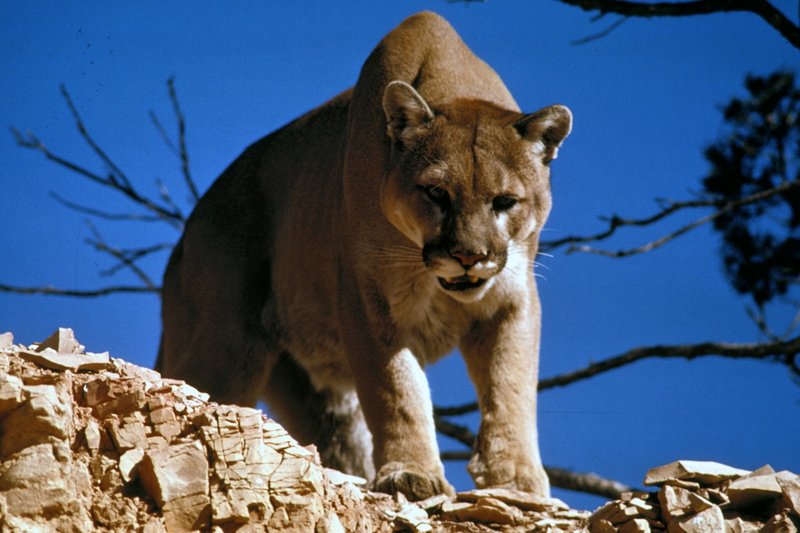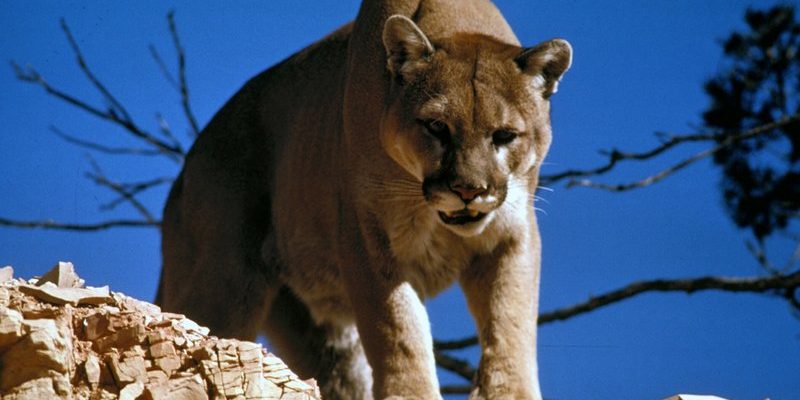
The mountain lion is more than just a pretty face in the wildlife kingdom. These big cats are apex predators, meaning they sit at the top of the food chain in their habitats. They help keep the populations of other animals in check, which affects everything from vegetation to smaller animal species. Think of mountain lions as nature’s balance keepers. Without them, things could get a little chaotic out there. So, why should you care about this elusive feline? Let’s dive into its role and see how it affects the world around it.
The Importance of Apex Predators
Apex predators, like mountain lions, are vital to maintaining the health of their ecosystems. They control the population of herbivores, such as deer, which in turn prevents overgrazing of vegetation. You can imagine it like a little dance: too many deer can lead to a situation where plants are eaten faster than they can grow back. This could result in soil erosion and loss of plant diversity. The mountain lion steps in as the main dancer, ensuring everything flows smoothly.
Moreover, the presence of mountain lions can encourage the movement of prey species. When a lion is nearby, herbivores tend to stay alert and move around more, which keeps them from over-concentrating in one area. This natural behavior helps distribute plant life more evenly, promoting biodiversity. Think of it as nature’s way of ensuring that no single plant species takes over the space—just like a well-balanced meal has a variety of flavors.
Interestingly, studies have shown that when mountain lion populations decrease, it can lead to a cascade of negative effects throughout the ecosystem. For example, without enough lions to keep deer populations in check, you might see a sharp increase in deer numbers. This can lead to overgrazing, which impacts the entire plant community and, ultimately, the animals that depend on those plants. So, the next time you see a mountain lion or hear about one in the news, remember, they’re playing a vital role in keeping nature balanced.
How Mountain Lions Impact Prey Populations
Mountain lions are skilled hunters, using their stealth and power to take down prey. They primarily feed on deer, but they also target smaller mammals such as rabbits and rodents. By preying on these animals, mountain lions help to regulate their populations, ensuring that no single species becomes too dominant. You might say they are nature’s very own pest control.
When mountain lions hunt, they often choose weak, sick, or old animals. This process is known as *natural selection*, and it’s an important part of how ecosystems function. By removing these individuals from the gene pool, mountain lions help strengthen the health of prey populations over time. It’s like weeding a garden; by pulling out the unhealthy plants, you allow the stronger ones to flourish.
In areas with healthy mountain lion populations, researchers have found that deer herds tend to be more balanced and diverse. This is because, with natural predators present, the deer are more cautious and spread out while feeding. This behavior benefits the entire ecosystem by avoiding overgrazing in any one area.
The Role of Mountain Lions in Biodiversity
Biodiversity is the variety of life in a particular habitat, and mountain lions play a surprising role in maintaining it. When they control herbivore populations, they indirectly support a variety of plant and animal species. For instance, with fewer deer munching on young saplings, trees and shrubs can thrive, providing habitat and food for birds, insects, and other wildlife.
Let’s take a moment to think about the broader effect. Biodiversity is crucial for ecosystems to remain resilient against changes such as climate shifts or diseases. When mountain lions keep prey populations balanced, they help ensure a rich variety of plants and animals can flourish. It’s kind of like a chain reaction that starts with a single mountain lion prowling through the forest.
Additionally, mountain lions can create what’s known as *trophic cascades*. When they hunt deer and other herbivores, they can influence how other species interact and thrive in their habitats. This interconnectedness shows just how vital mountain lions are—not just for their prey, but for the entire ecosystem’s health.
Human-Mountain Lion Interactions
As we venture out into nature, we sometimes come into contact with mountain lions, especially in areas where human development encroaches on their habitats. It’s easy to forget about their role when they challenge our perceptions of safety and comfort. However, it’s crucial to remember that these animals are just as much a part of the landscape as the trees or rivers.
Unfortunately, mountain lions often face threats from habitat loss and hunting. When humans push into their territories for development, it can lead to conflict. You might be wondering how we can coexist peacefully? The key is understanding and respecting their role in the ecosystem. Educating the public about mountain lions and promoting conservation efforts can help reduce these conflicts.
Many communities have implemented measures like educating residents on how to secure livestock and prevent attracting mountain lions to urban areas. It’s important that we learn to live alongside these amazing creatures, recognizing that they are essential to a thriving ecosystem.
Conservation Efforts
With mountain lions facing various threats, conservation efforts are essential to their survival. Organizations are working to protect their habitats, which include vast wooded areas and mountains. Preserving these lands is crucial because it allows mountain lions to roam freely and continue their role as apex predators.
Another important step in conservation is tracking their populations. Through GPS collaring and research studies, scientists gain insight into their behavior and movements. This information is vital for understanding how to protect them and their environment effectively. It’s interesting to see how technology aids in wildlife management and helps ensure a balanced ecosystem.
Community involvement also plays a significant role in conservation. Many local initiatives encourage residents to participate in habitat restoration projects and wildlife education programs. When people become engaged in conservation, it fosters a greater appreciation for the mountain lion and its place in the ecosystem.
Final Thoughts on Mountain Lions
The mountain lion is not just a beautiful creature that prowls the mountains; it plays an irreplaceable role in maintaining a healthy ecosystem. By controlling prey populations, enhancing biodiversity, and influencing the entire food web, these majestic cats are crucial for a balanced natural world.
When we respect their space and understand their significance, we can coexist with mountain lions and preserve their natural habitats. As we enjoy our outdoor adventures, let’s remember to appreciate the role of mountain lions in shaping the environments we love. They might just be the unsung heroes of our ecosystems, ensuring that nature continues its beautiful dance for generations to come.

